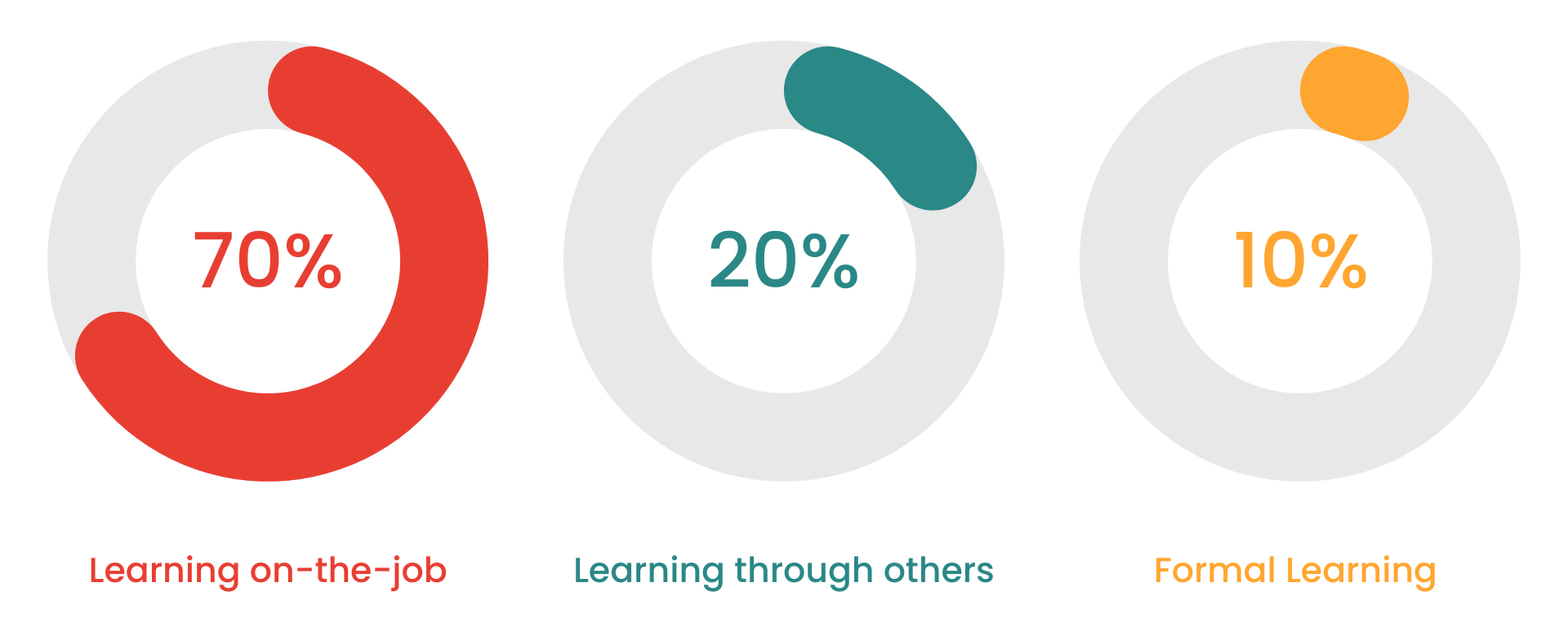
The goal of most L&D teams is the same: to create learning experiences that promote long-term behaviour change and acquisition of skills. And at the crux of that challenge is one thing: creating learning experiences that stick. Learning that “sticks” or ‘sticky learning’ relates to how the brain learns and how it retains information. By activating the brain for long-term retention, your people will remember the knowledge you’ve imparted long after the learning intervention has ended. Ultimately, we’re talking about learner retention that leads to application in the flow of work.
5 ways to boost learner retention for long-term behavioural change
To create learning that sticks, we must think about the entire experience. From our audience’s first interaction with L&D, all the way through to the completion. Here are five key ways you can create learning experiences that stick in your organisation:
1. Align With Learner Needs
If your learners never engage with your learning, they’ll never learn from you, right? So when it comes to ensuring retention, you need to make sure that your learners are engaging with you in the first place. The first question your learners will ask is “why should I get involved?” or “what’s in it for me?”. So aligning your offering with what your learners need is critical for long-term behavioural change.
To align with your learners needs, you should:
- Conduct a skills map for your organisation to identify skills gaps you may have
- Tap into learners’ emotions and ambitions – how might your learning help them achieve their goals?
- Communicate these benefits to your learners in a clear, enticing and engaging way.
2. Encourage Active Learning
If learners are simply sitting back, watching a video, reading a book or clicking through an eLearning course, they aren’t actively learning. So throughout your entire learning experience it’s important to encourage your learners to get involved, through discussions, problem solving, role plays, case studies and so on. In fact, encouraging active learning in a digital format can be easily achieved through integrating scenarios, simulations and gamification into your learning experience.
3. Use Multiple Modalities
To create learning experiences that stick, you must use repetition to make neural connections stronger and faster. This doesn’t mean you need to get your learners to retake programmes time and time again, or force them to sit through the same video until they can recite it line-for-line. Instead, you need to blend the modalities you’re using with one another. For example, you can use a combination of eLearning, on-demand webinars, virtual instructor-led training (VILT) and video content to ensure your learners truly retain the knowledge and information you’re imparting.
4. Provide Opportunities For Application
Application is paramount in learning – and is spoken about in a range of models and theories. And that’s because if you do not use the skills or knowledge you learn, the chances are you’d forget them over time. One of the most famous rules that emphasises application and on-the-job learning is the 70:20:10 model; 70% of learning happens on the job, 20% from feedback, and only 10% from formal training. Without providing opportunities for application – garnering long-term behavioural change will be a challenge. So make sure you include prompts and pauses for your learners to go away and practise the skills they have learnt in the ‘real world’. (And if this isn’t possible, scenario based learning is a great way to apply skills without the fear or risk of failure!)

5. Utilise storytelling throughout your learning experience
Storytelling is one of the oldest and most used tactics for teaching. A great story is remembered, retold and shared; which is exactly what we want to do when we’re making learning ‘sticky’. Research shows that learning which stems from a well-told story is remembered more accurately, and for far longer, than learning derived from facts and figures. So when you’re looking to create learning experiences that stick, storytelling is a must.
Using Technology To Enable Learning Experiences That Stick
Applying these five tactics will ensure that your learning experiences are more engaging and easier to retain for learners. But the truth is, you need the right tech behind you to truly create learning experiences that stick in today’s age. If your learners are faced with a poor user experience through the learning technology you’re using, they’ll be deterred from embracing your experience at all. Unless you have the right tech, you’ll struggle to create long-term behavioural change or learning experiences that stick, so if you want to discuss how we can help you with your learning technology, why not get in touch? We’d love to hear from you!

